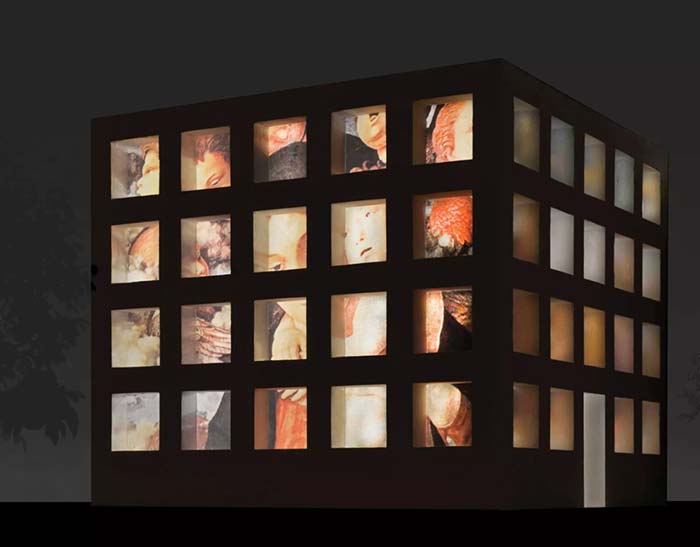
The project for the Seosomun Bakk historic site proposes to articulate the site into a sequence of 10 interconnected public courtyards orchestrated in accordance to the size and capacities of the human body and punctuated by discrete buildings that fulfill the program requirements and give meaning of use to the urban spaces around them. The courtyards are articulated by a network of low walls and changes in level connected by ramps in a way that allows differentiation and recognition while preserving the integrity of the whole.
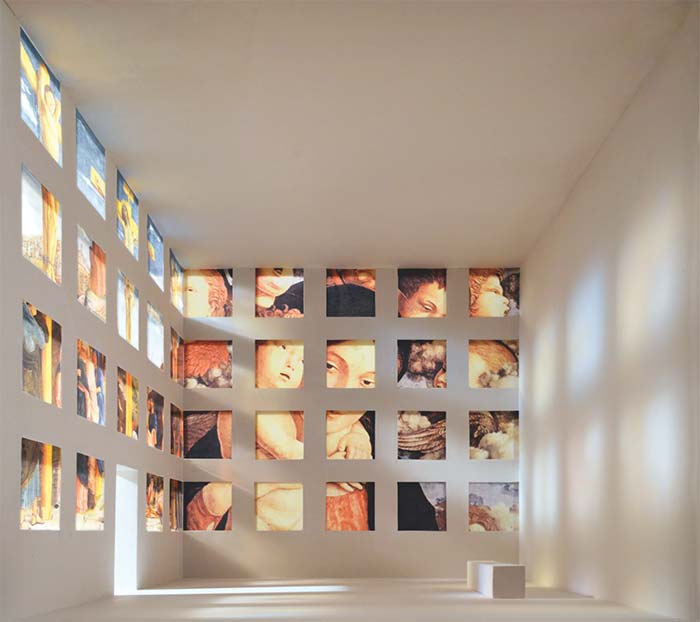
The changes in the level of the ground provide different vantage points of perspectival experience of the city, giving each courtyard a unique identity and perceived feeling. Since the project is to be built over artificial ground on the existing subterranean garage and recycling facility, the various heights of the ground provide enough depth of soil for the planting of different tree species that characterize each courtyard with their unique presence. Each courtyard could be named after the type of tree that occupies it.

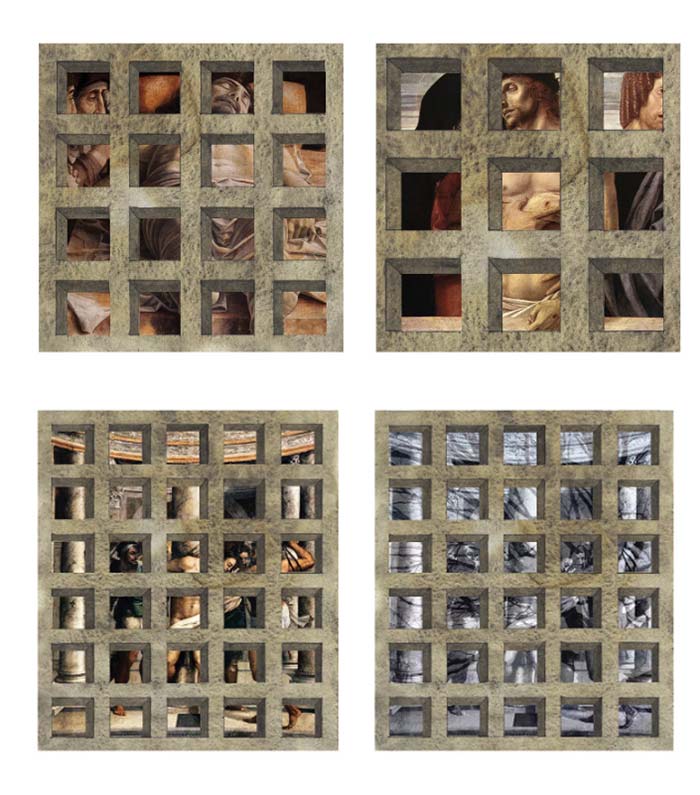
Dogwood
Magnolia
Cherry
Persimmon
Cypress
Pine
Cedar
Mulberry
Ginkgo
Poplar and Forsythia (sound barrier to the train tracks east of the site)
In this form and size, the courtyards form open urban rooms and relate to the dual dimension of living in the city, the awareness of self of the individual and the acknowledgment of others that defines community.
Although irregular in form, the courtyards are largely bound in simple overall dimensional relationships such as 20m x 30m, 10m x 50m, 40m x 40m, etc. giving them graspable relationships of size and connecting them, ideally, to the range of sizes typically enclosed within the palaces and temples of traditional Korean architecture.
Through their L-shaped or tapered forms, the courtyards question a single understanding of space, proposing instead a reading of depth dependent on personal location and viewpoint, promoting tolerance for a multiplicity of opinion through the understanding of public shared space.
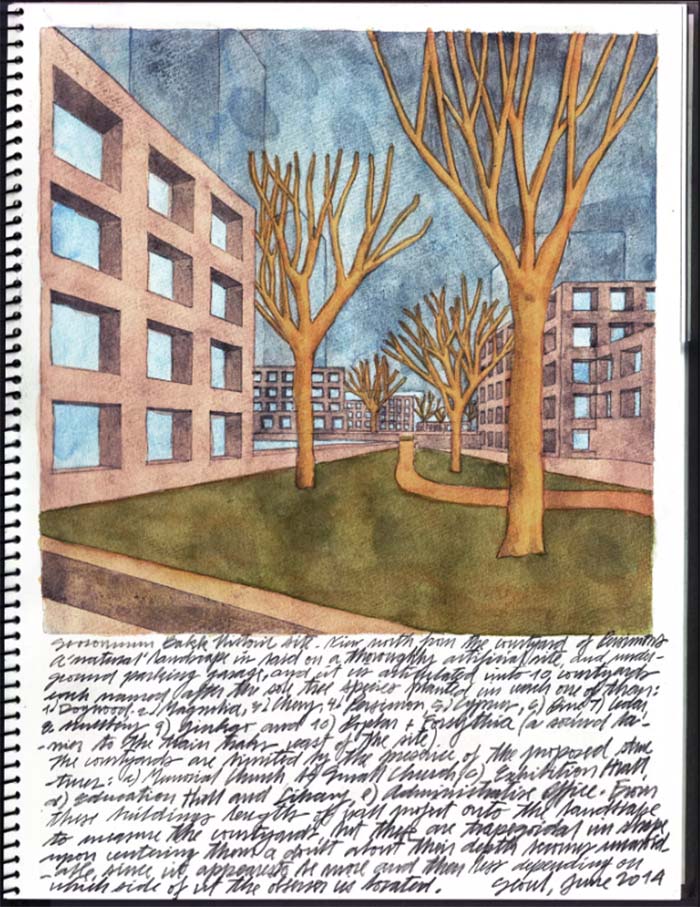
ARCHITECTURE
The different courtyards are articulated through a series of low walls and ramps that are extensions of the architecture of the proposed building. This way, the project proposes to fuse together the traditional urban distinctions between fabric and monument, a moment of sincerity for a city like Seoul, where most of the originals have been destroyed and replaced by questionable copies. The architecture proposes a homogeneous and indistinct expression, bringing down to everyday life the significance of heady subjects such as death and faith. All buildings are constructed in white site-cast prefabricated concrete, left exposed in both exterior and interior.
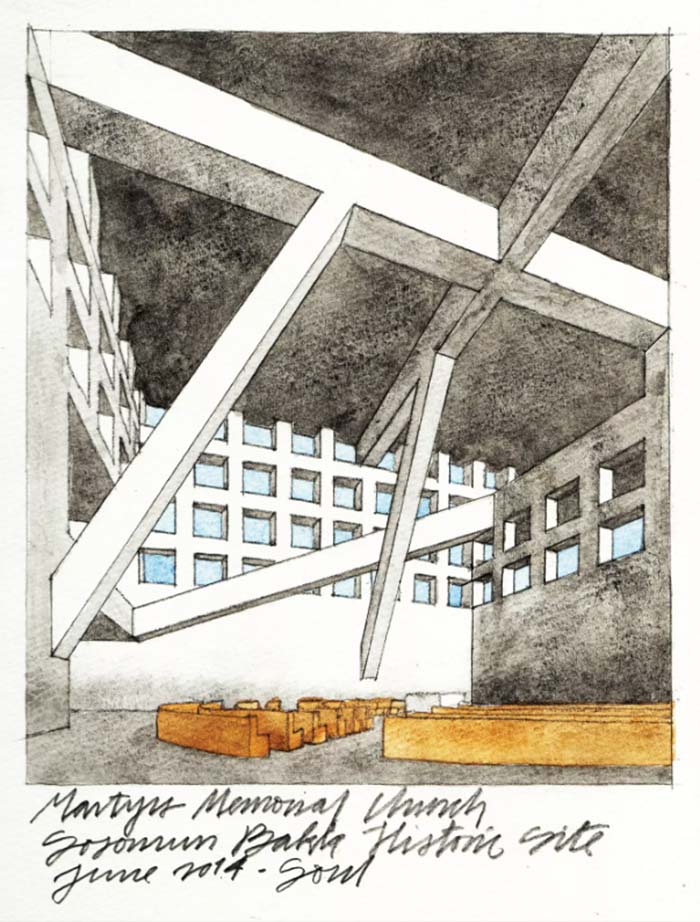
CHURCHES
The Memorial Church sinks its floor down into the level of the parking garage below to create a solemn space of 20 meters of depth while on the exterior not surpassing the recommended 15 meters of height. The span of its breadth and depth 25x25 meters is supported by a concrete cross on the ceiling that is itself supported by two diagonal columns emerging from the walls. Besides the main nave with centralized altar, the church includes the vestry, a baptistery and an elevated choir accessible by stepped ramp.
The Small Church is proposed as a building of modest size but platonic proportions, a perfect cube of 16x16x16 meters. The problem of religious art today, affected by the loss of craftsmanship and the crisis of non-ironic rhetoric, finds an expression in these churches through the use of projected light. The grid of windows defining the space of both churches could be used as a "giant-pixel" screen to project into the interior the inspired imagery of the Catholic faith.
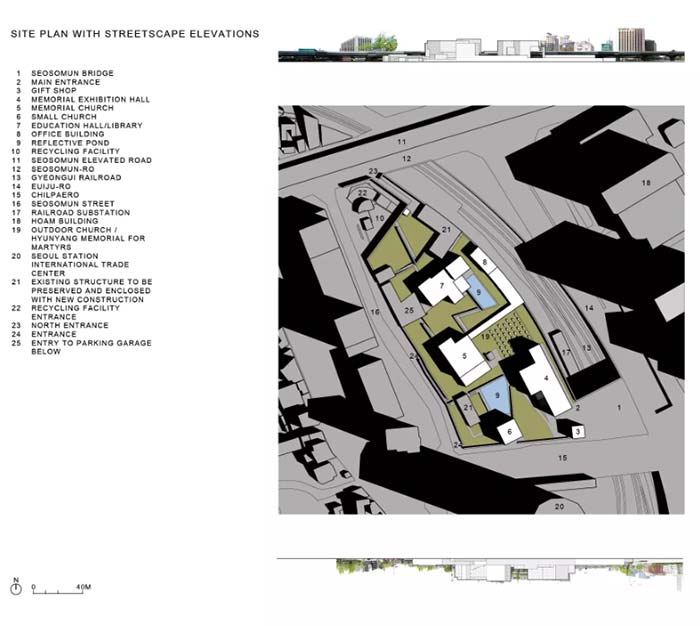
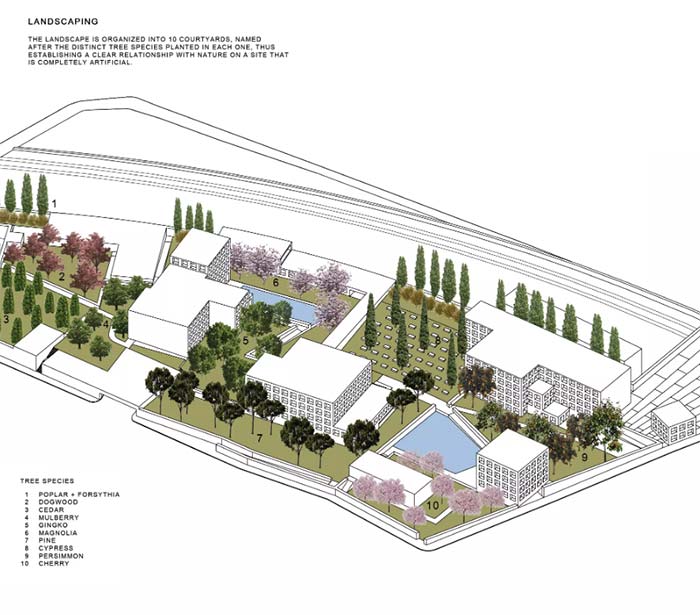
EDUCATION HALL AND LIBRARY
The Education Hall includes a state-of-the-art sloped-floor auditorium connected to a spacious entry lobby for people to gather before and after functions and directly adjacent to the Cafe to allow people to break during program intermissions. The Library located on the second floor provides a well-lit high-ceiling space for pleasant reading and is located close to the Cafe, providing easy relief for scholars engaged in study sessions. Both Cafe and Library are located in the Persimmon Garden, which includes a reflecting pool. This will provide a pleasant atmosphere for work and play, and a distinctive element to easily find and recognize the Library.
The project is based on three fundamental objectives:
a fine-tuned practical organization of spaces;
an architecture of today that is nonetheless well-grounded in a pre-modern tradition of religious architecture;
a forward-looking conception of shared facilities in the city both symbolically meaningful and yet welcoming and human-scale.

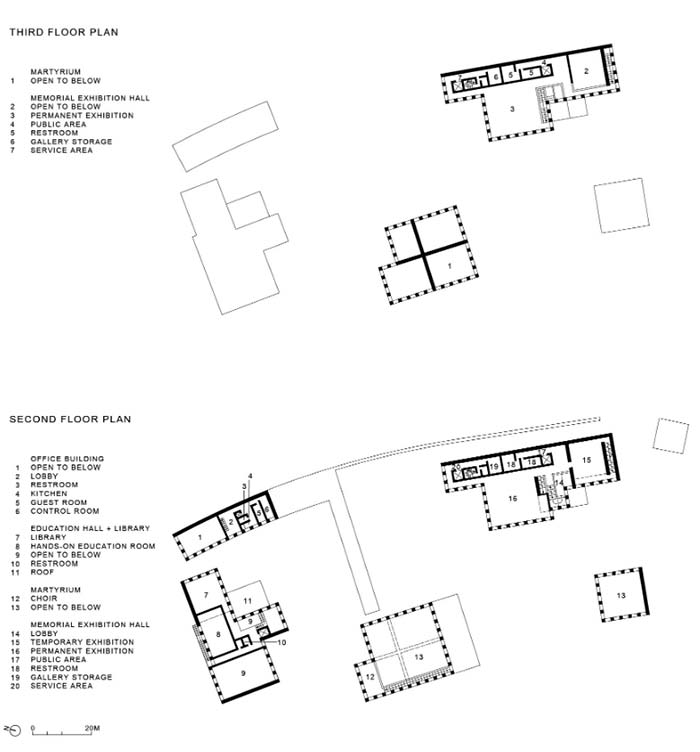
Obra Architects was founded by Pablo Castro and Jennifer Lee in the year 2000 in New York City. The year 2013 marked the inception of their third outpost in Seoul, following the opening of their Beijing office in 2011.
Obra is the 2006 winner of the PS1 MoMA Young Architects Program, 2005 Emerging Voices at the Architectural League of New York, and has produced a body of award-winning projects recognized by the American Institute of Architects, the Chicago Athenaeum American Architecture Awards, and the Kim Swoo Geun Preview Prize in Seoul, Korea, among others.
The work of Obra has been exhibited widely, at venues including the 2016 and 2014 International Architecture Biennale in Venice, Italy, The Museum of Modern Art, PS1 Contemporary Art Center, the Solomon R. Guggenheim Museum, the National Art Museum of China, the Deutsches Architekturmuseum, and Rhode Island School of Design.
Their second monograph entitled Obra Architects Logic: Selected Projects, 2003 - 2016, which traces the trajectories of nine selected architectural projects, was recently released by Architectural Publisher B, Copenhagen. Forthcoming projects include the Seoul Biennale of Architecture and Urbanism 2017 and an installation at the Biennale d’Architecture d’Orléans 2017.
Obra Architects









